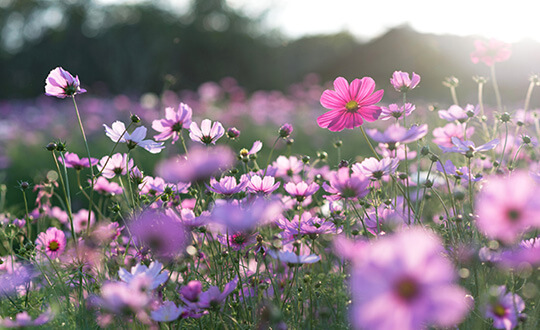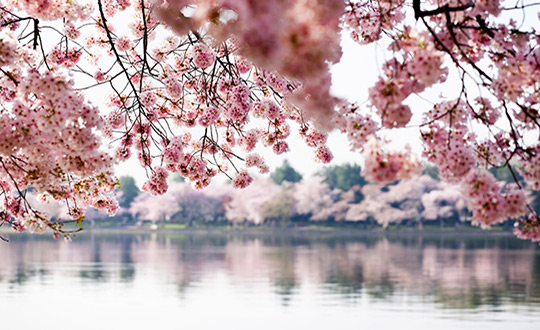Like the fabled tales recounted by seasoned fishermen, photographers also have stories about the "one that got away." Peering deep into the horizon they sigh while uttering, "if only I had my camera ready, it would've been a real prize winner." It's this elusive pursuit of beauty that makes wildlife photography both challenging and rewarding. Unlike the controlled environments common in zoos and farms, wildlife is fleeting. Since most opportunities last just a few short seconds, there is little room for error when the subject appears. While patience, persistence, and a touch of luck certainly are helpful, they're not sufficient to achieve consistent results. By utilizing these tips and techniques, you're sure to come home with an abundance of keepers.
Study Your Subject
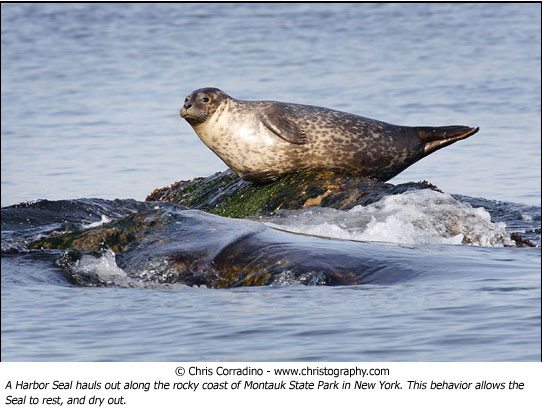
Wildlife photography is about so much more than technical details like aperture and shutter speed. It also goes well beyond the technology in today's latest and greatest cameras. In order to capture a subject's true beauty, it's essential to understand their behavior. By using the internet as a research tool, you can greatly increase your chances of success. For example, as part of my preparation to photograph Harbor Seals, I researched the tidal charts off the coast of Long Island. At low tide the water recedes to reveal large off shore rocks. These boulders are ideal for the seals to rest, and warm up on. Besides determining the best time of day and month to see them, I was also able to determine their approximate GPS coordinates. This knowledge proved invaluable as I found over sixty Seals on a quiet Friday afternoon in February. Ironically enough, I was the only photographer in the area. While it may be impossible to predict all of nature's variables, understanding your subject before heading out is one sure way to separate yourself from the pack.
Expect the Unexpected
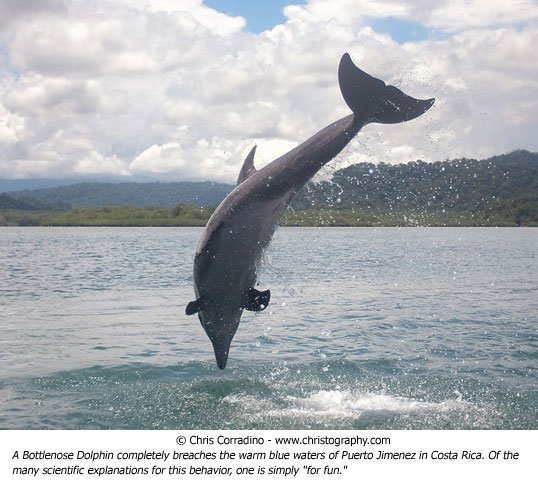
Wildlife waits for no one so you must be ready to shoot in an instant. As soon as you arrive at a location, take the cameras out of your backpack, turn them on, and remove the lens caps. This way, you are prepared for anything that may cross your path. I learned this while on a dolphin watching expedition in Costa Rica. I had a 400mm lens mounted on my tripod as I waited for the first sign of marine activity. Luckily, I also carried a second body with a 17-40mm lens draped over my shoulder. The exposure had already been set for the ambient light. As I scanned the waters through my telephoto lens I heard a collective gasp from the other passengers on the boat. I immediately turned to see a Bottlenose Dolphin completely airborne mere inches from the boat. In a split second I managed to fire 6 frames with the second body. Had I not prepared that camera with the exposure and wide angle lens, I would have missed one of my favorite images from the trip. By expecting the unexpected, you won't be caught off guard.
Technical Photography Tips
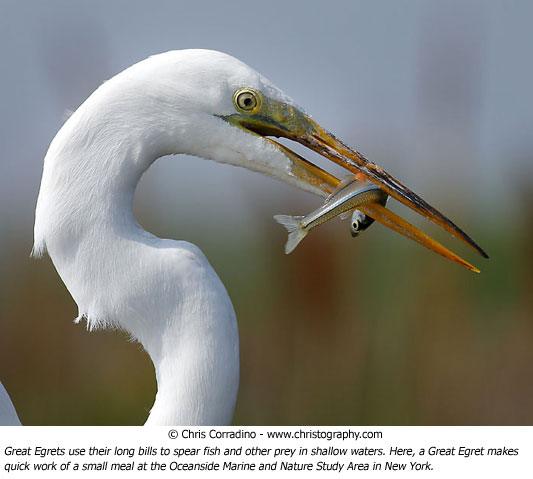
One of the most common issues facing wildlife photographers is how to get enough light into the camera while using a fast shutter speed. Ideally, you want to be at 1/1000 to freeze the action. Anything slower than 1/500, you increase the likelihood of blurry images due to subject motion. Before you set your super telephoto lens to its maximum aperture, consider that many lenses are somewhat soft when used wide open. To attain maximum subject sharpness it's helpful to stop down to f5.6 or even f8. Since you will be using a fast shutter speed and a smaller aperture, you will likely need to bump up your ISO to 800 or 1600. While it's true that DSLR noise levels are improving at a rapid pace, you will have much more control over the final image by using a third party noise reduction program. Software like Neat Image and Noise Ninja do an outstanding job of removing most noise artifacts. Once you apply the noise reduction, consider adding a small amount of Unsharp Mask to the image. To avoid over sharpening, try these settings as a starting point. Amount 135, Radius 0.3, and Threshold 3.
Of course, no amount of post production work can correct a blurry photo. To minimize the possibility of camera shake, use a tripod and ball head that are specifically designed to support the weight of your longer lenses. Once it's on this stable platform, connect a cable release so you don't have to touch the camera to press the shutter. By using this long lens technique every time, you can be confident that your images will be tack sharp, and suitable for enlargements.
Timing is Everything

In his book "Images à la sauvette," Photographer Henri Cartier-Bresson wrote "There is nothing in this world that does not have a decisive moment". This same idea can certainly be applied to wildlife photography. When you locate a subject you are interested in, it's tempting to immediately shoot a handful of pictures and move on. I recommend slowing down, and watching through the lens while studying the animal's behavior. Rather than settling for a static shot of a bird standing motionless, wait for a dynamic moment to start shooting. Often, it takes a few minutes for an animal to realize you are not a threat to their safety. Once they settle down, they will resume their natural activities. To avoid disturbing your subject, make slow deliberate movements, avoid direct eye contact, and wear muted colors. Your patience may be rewarded as mine was when I photographed the Great Egret catch a small meal. Once the action begins, there are a few different ways to handle it. If you have excellent timing, you can wait for the decisive moment before pressing the shutter. Some photographers find this to be a very precise and accurate approach. Alternatively, you can utilize your cameras fast burst mode and blast away as I did to capture this territorial dispute between two Gulls. This technique is especially effective with modern DSLRs capable of firing six frames per second or faster.
Show the Environment
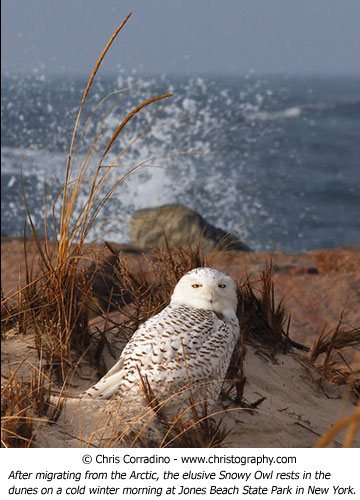
Don't be afraid to show some of the environment which surrounds your subject. This kind of approach can yield some very different perspectives that can potentially break the mold of the more routine close up images. You will also be adding a sense of scale which helps to show the grandeur of the natural world. Just be sure to keep your background in mind when using this technique. If there are too many distracting elements behind the subject, you will draw attention away from the animal. When I found this Snowy Owl on a cold winter morning, I noticed how the occasional large wave would crash into the rocks and send sea spray high into the air. I wanted to show the relationship between the elusive owl, and its ocean front habitat. In anticipation of the next set of waves, I stopped down to f/11 and moved back a few feet. A wide aperture would have essentially blurred the background beyond recognition. Moments later my prediction proved correct, and the image I had pre-visualized unfolded right before my eyes.
Creating a beautiful image of an elusive creature is an exciting challenge for all nature photographers. As fleeting as these moments are, you can relive the experiences through photos you are proud to call your own. Equipped with these proven tips and techniques, you are sure to take your wildlife photography to the next level!


